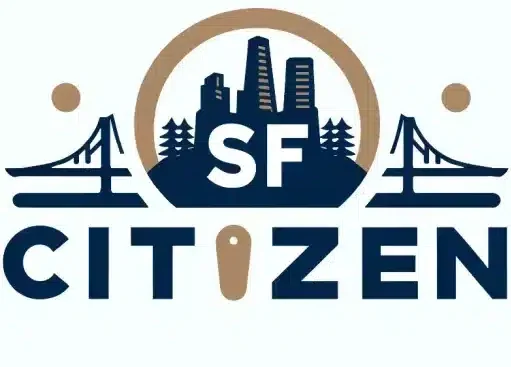Since its establishment in 1996, the San Francisco Department of the Environment (SF Environment) has been at the forefront of the city’s efforts to create a sustainable and environmentally conscious future. As a voter-mandated agency, SF Environment is responsible for developing and implementing innovative policies and programs that protect and enhance San Francisco’s urban and natural environment.
In This Article
Key Points
- SF Environment plays a crucial role in shaping San Francisco’s environmental policies and initiatives
- The department’s efforts have contributed to significant reductions in greenhouse gas emissions and advancements in urban sustainability
- Community involvement and government administration are essential components of SF Environment’s approach to environmental stewardship
The Mission and Vision of SF Environment
The core mission of the San Francisco Department of the Environment is to create a sustainable and resilient city that prioritizes the health and well-being of its residents and the environment. To achieve this goal, SF Environment employs a strategic approach that combines innovative policies, community engagement, and collaboration with key partners.
The department’s vision is to make San Francisco a global leader in environmental sustainability by integrating environmental legislation into local governance. This holistic approach ensures that sustainability is at the forefront of decision-making processes across all sectors of the city.
Climate Action and Decarbonization Efforts
SF Environment has been instrumental in implementing initiatives aimed at reducing greenhouse gas (GHG) emissions and mitigating the impacts of climate change. The department’s efforts have proven effective, with San Francisco surpassing its 2017 climate goals ahead of schedule, achieving a 36% reduction in community-wide GHG emissions compared to 1990 levels.
The Strategic Decarbonization Assessment (SDA) is a key component of SF Environment’s climate action strategy. The SDA provides a comprehensive roadmap for the city to achieve net-zero emissions by 2050, focusing on the transportation, building, and energy sectors.
Urban Sustainability and Renewable Energy
Promoting renewable energy and energy efficiency is a central focus of SF Environment’s urban sustainability efforts. The department works to increase the adoption of clean energy solutions, such as solar power and wind energy, while also implementing programs to improve energy efficiency in buildings and homes.
The Urban Forest Plan is another critical initiative that contributes to the city’s ecological health. By expanding green spaces and increasing urban forest canopy coverage, SF Environment aims to enhance biodiversity, improve air quality, and mitigate the urban heat island effect.
Transportation and Emissions Reduction
SF Environment’s Transit First policy prioritizes sustainable transportation options, such as public transit, walking, and cycling, over private vehicle use. This policy has been instrumental in reducing transportation-related emissions and improving urban mobility.
The department also promotes the adoption of zero-emission vehicles and clean transportation solutions, such as electric cars and buses. These efforts have contributed to significant reductions in community-wide GHG emissions and improved air quality in the city.
Government Administration and Environmental Policy
SF Environment collaborates with various organizations and coalitions to shape environmental policy at the local, state, and national levels. The department is a member of the Local Government Sustainable Energy Coalition, which advocates for a sustainable energy future, and the Urban Sustainability Directors Network, which facilitates the exchange of best practices among sustainability professionals.
The department also participates in the C-Clinton Climate Initiative and Bay Area environmental partnerships, working to address climate change and promote sustainable development on a global scale.
Community Engagement and Public Participation
SF Environment recognizes the importance of community involvement in environmental decision-making and actively engages with residents through various educational programs and resources. The department provides workshops, events, and online tools to help individuals and businesses adopt sustainable practices and reduce their environmental impact.
Case studies of successful community-led environmental projects demonstrate the power of public participation in creating positive change. For example, the Bayview-Hunters Point Community Greening Project, supported by SF Environment, has transformed vacant lots into vibrant green spaces, improving the neighborhood’s environmental and social well-being.
Measuring Progress and Future Outlook
SF Environment employs various methods to track progress in urban sustainability and climate action, including regular reporting on GHG emissions, energy consumption, and waste reduction. The department also conducts periodic assessments of its programs and policies to ensure their effectiveness and identify areas for improvement.
Looking ahead, SF Environment anticipates future challenges and opportunities as the city continues to grow and evolve. The department remains committed to adapting its strategies and initiatives to meet the changing needs of the community and the environment.
FAQ
How does the San Francisco Department of the Environment contribute to climate action?
SF Environment plays a crucial role in climate mitigation and adaptation efforts by developing and implementing policies and programs aimed at reducing GHG emissions, promoting renewable energy, and improving energy efficiency.
What is the Transit First policy, and how does it impact San Francisco’s transportation system?
The Transit First policy prioritizes sustainable transportation options, such as public transit, walking, and cycling, over private vehicle use. This policy has been instrumental in reducing transportation-related emissions and improving urban mobility.
How does SF Environment promote renewable energy and energy efficiency within the city?
SF Environment implements initiatives and programs focused on increasing the adoption of clean energy solutions, such as solar power and wind energy, and improving energy efficiency in buildings and homes.
What strategies are in place for reducing GHG emissions in San Francisco?
SF Environment employs various measures to lower emissions, including promoting sustainable transportation, increasing renewable energy use, improving energy efficiency, and implementing the Strategic Decarbonization Assessment.
How can residents of San Francisco get involved with the Department of the Environment’s initiatives?
SF Environment offers community engagement opportunities and resources for public participation, such as workshops, events, and online tools, to help individuals and businesses adopt sustainable practices and contribute to the city’s environmental goals.

